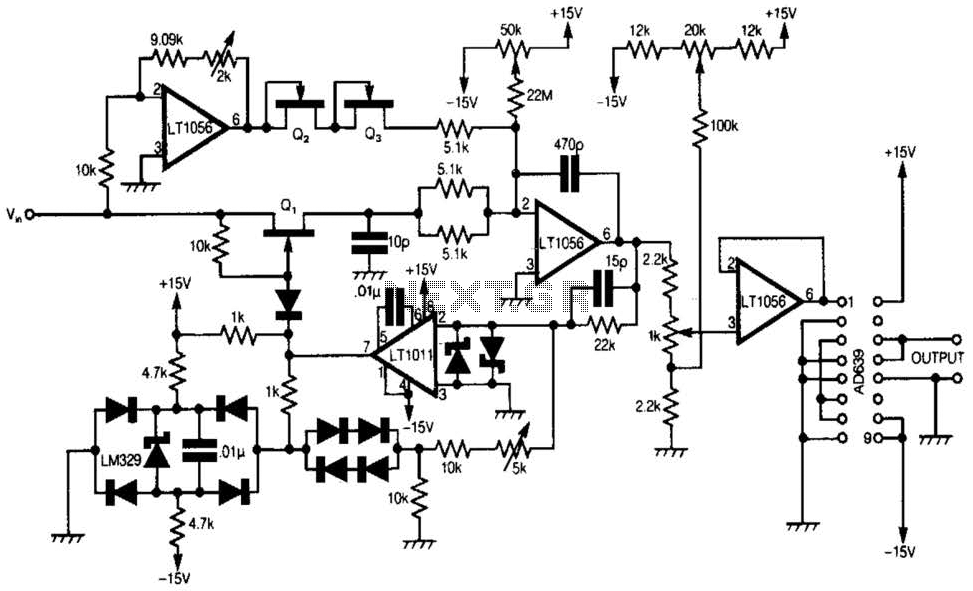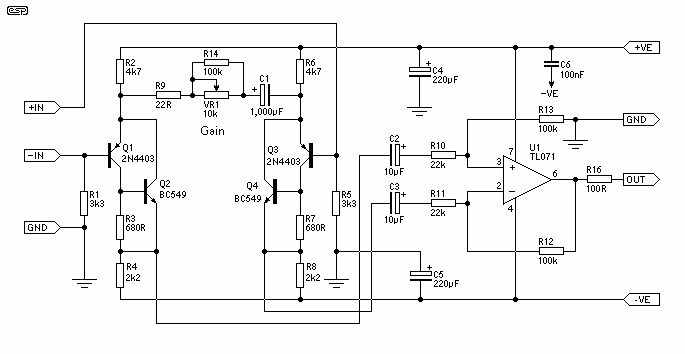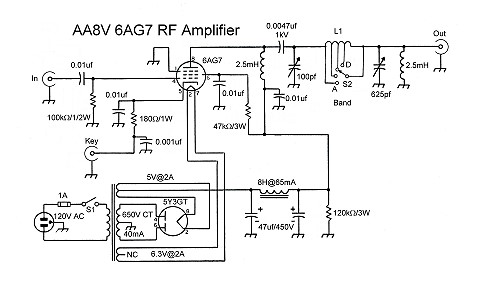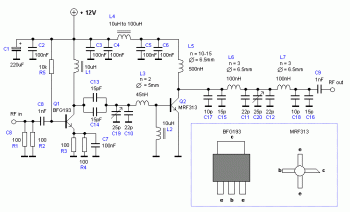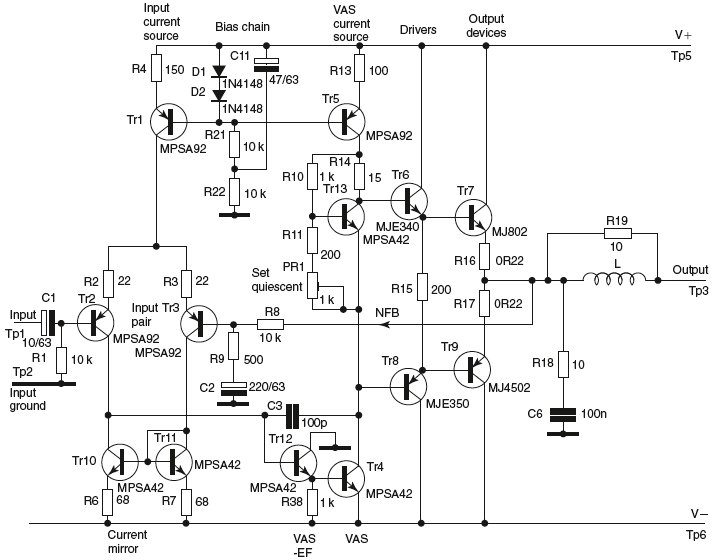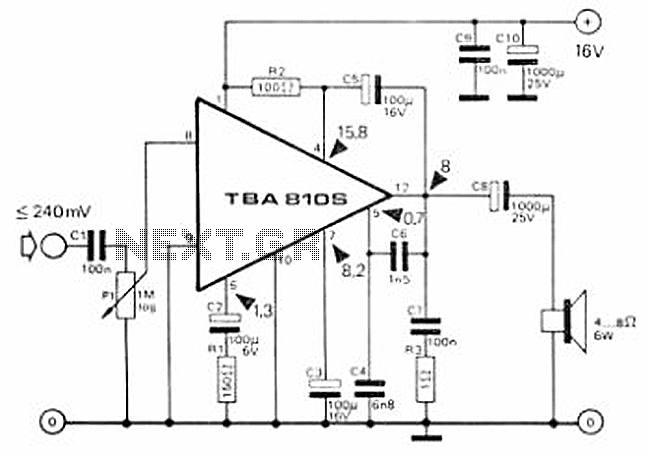
LM1201 Video Amplifier with Balanced (Bi-Phase) Output
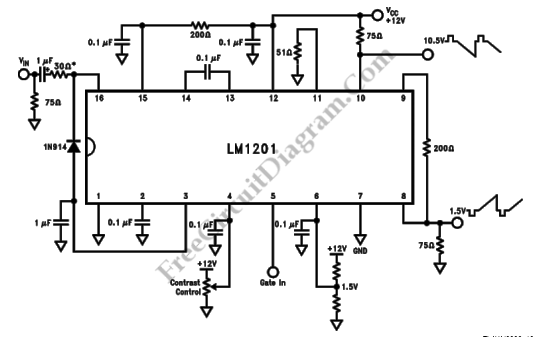
This is a schematic diagram of a video amplifier circuit with bi-phase output. The bi-phase output generates both positive-going and negative-going signals, enabling balanced signaling. The primary component of this circuit is the LM1201. In this configuration, the inverted video is obtained at pin 10 due to the 75-ohm termination to the power supply voltage. A voltage divider connected to pin 6 is utilized to adjust the black level of the inverted video (pin 8) to 1.5V.
The video amplifier circuit employs the LM1201 integrated circuit, which is specifically designed for video processing applications. The bi-phase output feature is crucial for applications requiring differential signaling, which enhances noise immunity and allows for longer transmission distances.
The circuit operates by taking an input video signal and amplifying it while ensuring that both the positive and negative phases are produced. The termination resistor of 75 ohms at pin 10 is essential for impedance matching, minimizing signal reflections, and ensuring optimal signal integrity.
The voltage divider connected to pin 6 plays a significant role in setting the black level of the video signal. By adjusting the voltage at this pin, the circuit can maintain a consistent reference level for the inverted video output at pin 8, which is critical for accurate video representation. The output at pin 8 is expected to be a clean and stable inverted video signal, which can then be further processed or transmitted as needed.
Overall, this schematic diagram illustrates a robust video amplifier circuit that effectively handles video signals with precision, making it suitable for various applications in video processing and transmission systems.This is a schematic diagram of video amplifier circuit with bi-phase output. Bi-phase output provides both positive-going and negative-going signal, and can be used as balanced signaling. The main component of this circuit is LM1201 In this circuit, the inverted video is obtained at pin 10 because of the 75 © termination to the power supply vo
ltage. The voltage divider on pin 6 is used to set the black level on inverted video (pin 8) to 1. 5V. Here is the schematic diagram of the circuit: 🔗 External reference
The video amplifier circuit employs the LM1201 integrated circuit, which is specifically designed for video processing applications. The bi-phase output feature is crucial for applications requiring differential signaling, which enhances noise immunity and allows for longer transmission distances.
The circuit operates by taking an input video signal and amplifying it while ensuring that both the positive and negative phases are produced. The termination resistor of 75 ohms at pin 10 is essential for impedance matching, minimizing signal reflections, and ensuring optimal signal integrity.
The voltage divider connected to pin 6 plays a significant role in setting the black level of the video signal. By adjusting the voltage at this pin, the circuit can maintain a consistent reference level for the inverted video output at pin 8, which is critical for accurate video representation. The output at pin 8 is expected to be a clean and stable inverted video signal, which can then be further processed or transmitted as needed.
Overall, this schematic diagram illustrates a robust video amplifier circuit that effectively handles video signals with precision, making it suitable for various applications in video processing and transmission systems.This is a schematic diagram of video amplifier circuit with bi-phase output. Bi-phase output provides both positive-going and negative-going signal, and can be used as balanced signaling. The main component of this circuit is LM1201 In this circuit, the inverted video is obtained at pin 10 because of the 75 © termination to the power supply vo
ltage. The voltage divider on pin 6 is used to set the black level on inverted video (pin 8) to 1. 5V. Here is the schematic diagram of the circuit: 🔗 External reference
